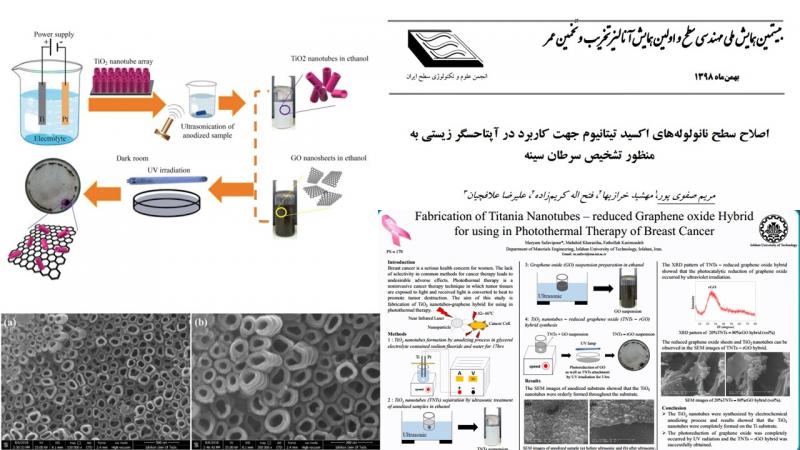- English
- فارسی
2012-Safavipour.M.
 |
 |
Maryam Safavipour
Email: msafavipoor@yahoo.com
- BSc, (2012-2016): Evaluation of corrosion behavior of Ti coated with TiO2 nanotubes/chitosan-Bioglass for using in dental implant
Abstract:
In the present work, we studied the effects of titania nanotube formation incorporated with chitosan bioactive glass on electrochemical behavior of titanium substrates. The samples were characterized by Scanning electron microscopy (SEM), X-ray diffraction (XRD) and Fourier-transform infrared spectroscopy (FR-IR). The corrosion behavior of coated samples was investigated in Ringer solution through potentiodynamic polarization and electrochemical impedance spectroscopy measurements. The results showed that the TiO2 nanotubes orderly formed on titanium substrate through electrochemical anodizing process and variation in the applied voltage and duration of anodizing process resulted in formation of TiO2 nanotubes with various diameters. In addition, the corrosion results showed that the formation of titania nanotubes and chitosan-bioactive glass on Ti substrate improved the corrosion behavior of titanium substrate. In addition, our study revealed a rise in hardness of treated samples compared to untreated ones and good adhesion strength to the substrates. These good mechanical and electrochemical characteristics make the nanohybrid TiO2 nanotube/chitosan-Bioglass coating, a proper candidate for dental applications.
Outcome:
- MSc, (2016-2019): Design and fabrication of aptasensor based on graphene/ titania nanotubes for using in detection and therapy of breast cancer
Abstract:
In this study, we developed a simple and cost effective aptasensor based on TiO2 nanotubes–reduced graphene oxide (TiO2 nanotube-rGO) linked to MUC1 aptamers for ultrasensitive electrochemical detection of breast cancer cells (MCF-7 cells). Moreover, photothermal performance of nanohybrid TiO2-rGO was investigated for using in cancer treatment. In this regard, after synthesize of TiO2 nanotubes via anodization process, TiO2 nanotubes–rGO hybrid was synthesized by UV assisted reduction of GO and subsequent TiO2 nanotubes attachment to rGO sheets. The resultant hybrid could provide an excellent large surface area which led to improvement of suitable sites for MUC1 aptamer immobilization. Our results revealed that TiO2-rGO aptasensor exhibits superior analytical performance for MCF-7 cells detection with detection limit of 42 cells.ml-1 within detection range of 103 – 107 cells. ml-1. Moreover, the TiO2 nanotube-rGO hybrid nanoparticles revealed great photothermal performance exposed to NIR laser. Consequently, it’s expected that synthesized hybrid in this study would be a useful and beneficial tool for detection and treatment of breast cancer.
Outcome: Paper


